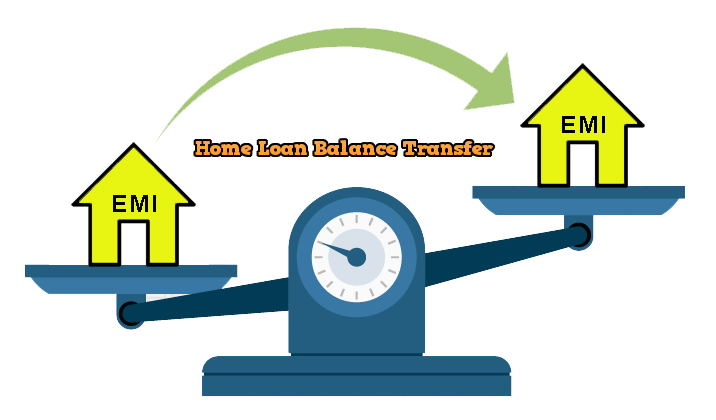When it comes to home loans, one factor that can greatly impact your finances is the interest rate. A higher interest rate can result in larger monthly payments and more overall interest paid over the life of the loan. To maximize your savings and reduce the burden of high interest rates, one option you can consider is a home loan balance transfer. A home loan balance transfer lets you transfer your outstanding housing loan to a new lender who is willing to offer a lower rate of interest. By doing so, you can potentially save a significant amount of money over time.
What Is Home Loan Balance Transfer?
Home loan balance transfer is the process wherein the existing housing loan balance can be transferred to a new lender in return for a reduced interest rate. The new lender, in this process, pays off the remaining loan balance, and the borrower continues paying the low-interest monthly EMIs to the new lender. The process of home loan balance transfer is simple and hassle-free and can be completed within a few weeks. However, borrowers need to be aware of the costs involved in the process, such as processing fees, legal fees, and prepayment charges, among others.
Why Consider Home Loan Balance Transfer?
There are several reasons why a borrower may consider a home loan balance transfer. The main objective is to maximize savings on the payable interest. By opting for a balance transfer, the borrower can get significantly low interest payments over the repayment period.
Another reason why you should consider a home loan balance transfer is the type of home loan interest rate – floating vs fixed rate of interest. Borrowers who have taken a loan at a floating interest rate may want to switch to a fixed interest rate to protect themselves from any future interest rate hikes. Similarly, borrowers who have taken a loan at a fixed interest rate may want to switch to a floating interest rate to take advantage of any future interest rate cuts.
When the aim is to maximize savings with a home loan balance transfer, you must carefully consider the interest rate, along with associated legal charges, and processing fees. One should assess if the new loan costs more than the existing balance to check if the transfer is necessary or beneficial.
Factors to Consider Before a Home Loan Balance Transfer
Transferring a home loan balance can be a wise move for borrowers as it can help them save a significant amount of money. However, before making the decision to transfer the home loan balance, borrowers need to consider various factors that can affect their decision.
Home Loan Interest Rate
The first factor that borrowers need to consider before transferring their home loan balance is the interest rate. Borrowers should compare the interest rates of the existing home loan and the new home loan, including the processing fee, prepayment charges, and other fees. If the new home loan offers a lower interest rate, then it can be a good idea to transfer the home loan balance, as it can help borrowers save money on interest payments. However, if the difference in interest rates is not significant, then it may not be worth the effort and cost of transferring the home loan balance.
Tax Benefit on Home Loan
Another important factor that borrowers need to consider before transferring their home loan balance is the tax benefit on home loans. Under the Income Tax Sections 80C and 24, borrowers are eligible for tax benefit on home loan interest and principal amount paid. If borrowers transfer their home loan balance, they may lose the tax benefits they were receiving on their existing home loan. Therefore, borrowers need to calculate the tax benefits they will receive on the new home loan and compare it with the tax benefits they were receiving on their existing home loan.
Top-up Loans
Among the key benefits of a home loan balance transfer, one that attracts many borrowers is the top-up loan. Top-up loans are additional loans that can be purchased as a rider on the existing housing loan through a single application. This low-rate top-up loan can be used for multiple purposes, such as debt consolidation, home renovations, or funding education.
Eligibility for Home Loan Balance Transfer
To be eligible for a home loan balance transfer, borrowers have to meet certain eligibility requirements. These criteria are set by the lender and may vary from one lender to another. The most basic eligibility criteria specified by lenders are as follows:
Credit Score
One of the most important factors that determine your eligibility for a home loan balance transfer is your credit score. Lenders typically ask for a CIBIL score above 750 but it varies depending on the loan policy.
Repayment History
Another important factor is your repayment history. Lenders prefer borrowers who have a good repayment history and have not defaulted on any loan payments in the past.
Employment Status & Salary
Your employment status and income are also crucial factors to consider. Most lenders prefer customers with prolonged employment and a steady income source.
Apart from these factors, lenders may also consider other factors such as the outstanding balance on your existing loan, the tenor of the loan, and the value of the property.
To assess whether or not you are eligible for a home loan balance transfer, consider using a home loan eligibility calculator. The tool considers various factors, like your credit score, salary, and outstanding loan balance to determine your eligibility.
Summary
To put it in a nutshell, a home loan balance transfer is a prudent financial move when it comes to saving money on home loan repayments. For maximum savings on a home loan balance transfer, research and compare various loan products offered by different lenders. Settle for a lender who offers flexible repayment, competitive home loan interest rate, and charges nominal fees.


